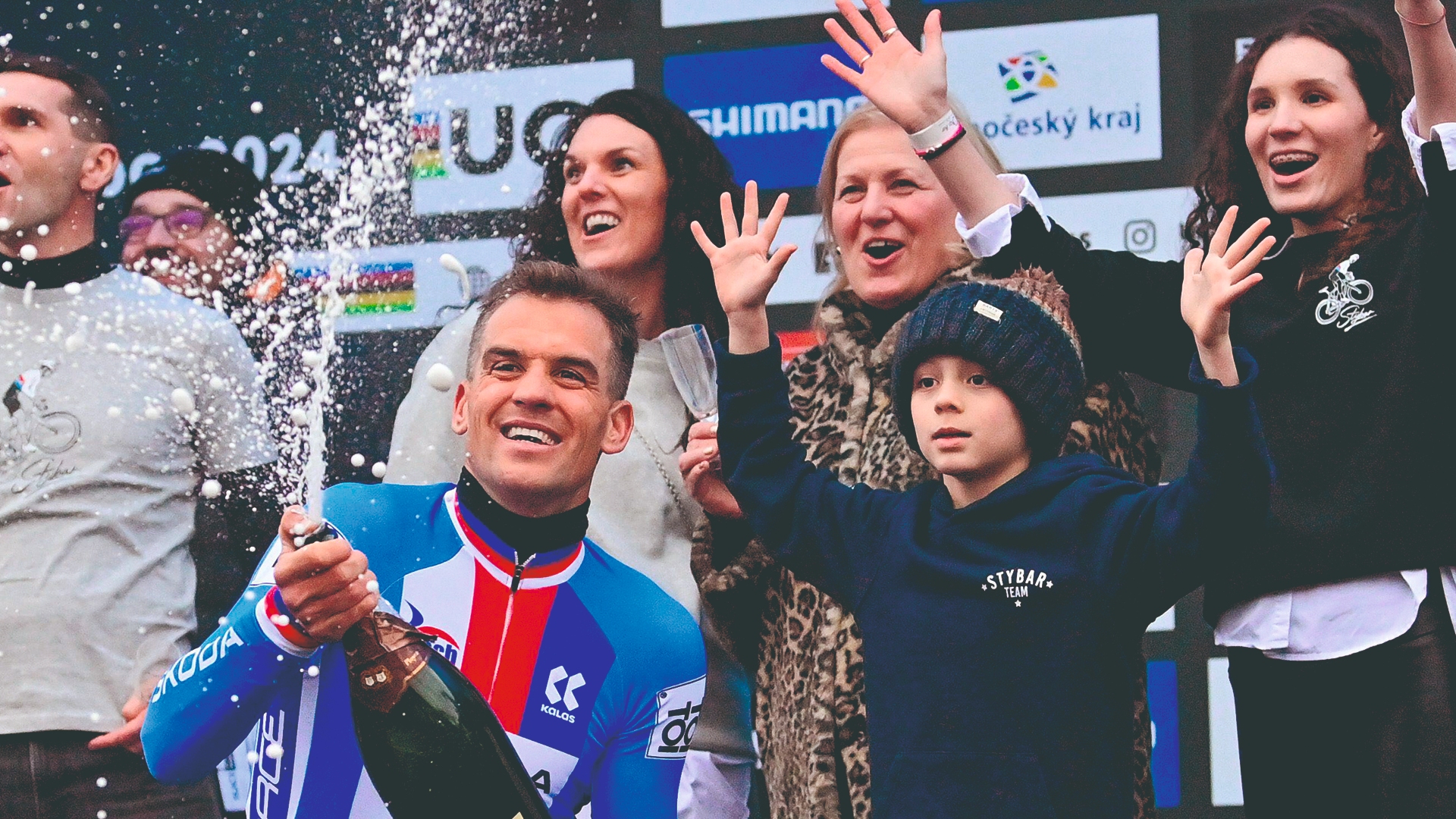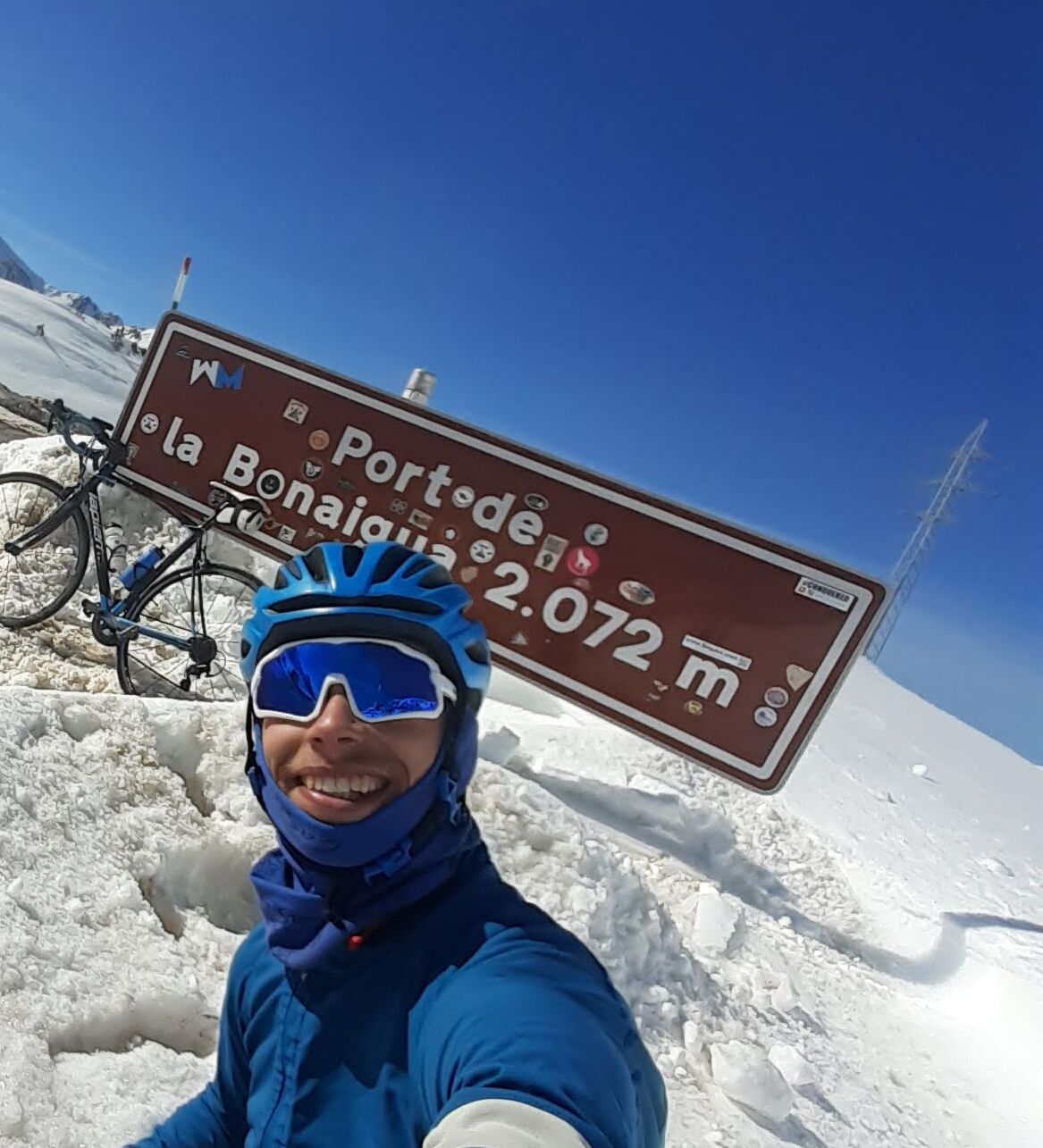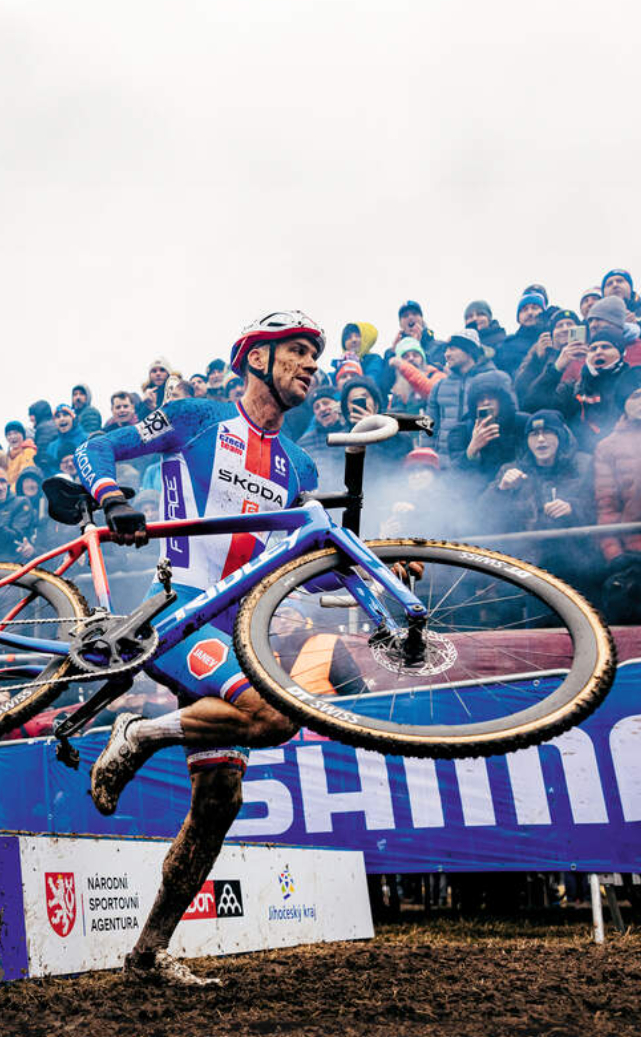'I have to accept it': Zdeněk Štybar on the rare condition which curtailed his cyclocross career
A rare arterial condition curtailed Zdeněk Štybar illustrious career but not before one last heroic home tilt at the cyclo-cross Worlds


Zdeněk Štybar has been competing in cycling for more than half his life. He knows when his body just doesn’t feel right. “For the past three years, I was underperforming and could always explain why,” the Czech tells me. “First there was Covid, and then I had a heart issue.” In April 2021, he had surgery to fix cardiac arrhythmia, an irregular heartbeat. “And then in the past year, I was training well, hitting good numbers and should have been in the best shape of my life, but I just couldn’t perform in races. My legs were so tired, so sore. When we hit a climb, I was immediately dropped, and could no longer do the numbers. I didn’t understand. It was such a weird feeling. I felt lost.”
Naturally, Štybar, a three-time cyclo- cross world champion, former winner of Strade Bianche and twice runner-up at Paris-Roubaix, began to surmise that his age, 37 at the time, was catching up with him. “I said to my daughter, ‘do you think after all these years of suffering, my body just won’t let me go deep again?’ I told myself it’s time to stop my career and refocus on something else.”
Štybar had joined Jayco-Alula in 2023 after spending 12 years with the various guises of what is now Soudal Quick-Step, and the team’s doctor scheduled one more assessment. “He said he’d do a blood test and check for iliac artery endofibrosis.” Lo and behold, after a sub-par Classics campaign last year, they located the cause of Štybar’s misery. “They found it on both my legs.”
Iliac artery endofibrosis (IAE) is damage of the iliac artery in the upper leg, which restricts the blood supply to the muscles and tissues of the lower limb. It’s a rare condition, but one that has become increasingly common in both the men’s and women’s pelotons in the past decade, with riders including Marianne Vos, Annemiek van Vleuten and Bob Jungels all affected.
Štybar had braced himself for the news, but nonetheless it hit him hard. “It was difficult finding out,” he says. “I immediately thought of Bob Jungels [who was successfully treated for IAE in June 2021]. ‘Oh sh*t,’ I said, ‘I’m on the same page he was on.’ You always hope it’s something else. It’s a condition that is progressive so there was no way I could race with it. But I didn’t want to give up on my career, and especially not when I was enjoying it and I couldn’t go out on a high. The biggest blow was when the doctor said having it on both legs was really rare.”
Arterial thickening

A post-op comeback ended when Štybar caught Covid at the Renewi Tour
Until the turn of the millennium, little was known about iliac artery endofibrosis, and it was an under- recognised and under-reported condition. “People didn’t think of artery problems in young, fit, healthy people,” says Rob Hinchliffe, a professor of vascular surgery at the University of Bristol and one of the world’s leading experts in IAE. Cases kept cropping up among elite endurance athletes, most of whom were under 40, alerting the medical profession.
“It’s essentially a thickening of the wall of the external iliac artery that runs from the stomach to the groin,” explains Hinchliffe. “That artery supplies the whole of the lower limb with arterial blood.” It develops owing to the high volume of repetitive flexion and extension of the hip. Symptoms often include cramp in the calf, thigh or buttock, but typically disappear five minutes after exercise, meaning that most cases are not diagnosed. “It develops slowly over a number of years, and at first there are no symptoms,” Hinchliffe adds. “When bike riders exercise, the artery stretches as the hips are flexed. Cyclists require a very high volume of blood flow and pressure, which in turn causes a micro trauma to the vessel. The response to that trauma is a thickening of the artery.”
Get The Leadout Newsletter
The latest race content, interviews, features, reviews and expert buying guides, direct to your inbox!
In the worst cases, thankfully rare, it can cause a potentially fatal blood clot. Cyclists are able to detect symptoms much earlier than sedentary people because of how frequently they exercise – they tend to notice the issue. “The number of cyclists being confirmed as having it is increasing because it’s more recognised,” says Hinchliffe. “Cyclists and team doctors know to look for it, and also because pros are cycling for longer and more intensely than ever before.” Are cases increasing overall? “I’m not sure we can say that more people have it now, but in the past people with symptoms wouldn’t have known what was causing the lack of power and just stopped cycling. Now there’s an answer.”

Stybar’s home Worlds provided an emotional coda to a glorious career
Iliac artery endofibrosis FAQs
Rob Hinchliffe is professor of vascular surgery at the University of Bristol.
Q: What are the main symptoms?
A: Persistent lower leg symptoms of cramp and a loss of power in one or both legs might indicate you have it. Riders can also experience ‘pins and needles’ in the foot. But many people won’t ever get symptoms, and some people are able to continue riding without it worsening.
Q: Why is it more common in the left leg?
A: We don’t know, but it’s probably related to the fact that the anatomy is slightly different on the left side of the body.
Q: Are women more susceptible?
A: There have been more high-profile female cyclists with the problem recently, but we can’t say if it’s more common in women. We’d only find out the incidence rate if we could do tests on every elite cycling club in the UK. We don’t know why it progresses in some people but not in others.
Q: Is surgery safe?
A: Yes, and we know that the repairs work well in the immediate years following surgery. Surgery, however, is not suitable for everyone and carries significant risks. Importantly, what we don’t know is if the repairs will last another 60 years. Of course, we can surgically treat problems if they arise, but we’re still unsure how long the initial surgery will last.
Q: Are cyclists more at risk?
A: We should put it into perspective: you’re far more likely to have a serious road accident or break your collarbone than have this condition. I see, on average, two patients a month, and though most are cyclists, that’s not many people in the grand scheme of things. I don’t think we should be screening every cyclist for it.
OP Hope
The solution proposed to Štybar was surgery. “It was a big decision because you never know if it will work out, and you don’t want surgery on your arteries at such a young age,” he remembers. “I knew guys who’d had surgery before, and they lost most of the season because of the recovery time. The doctor said it would take longer for me to come back, but I had no choice – I had to do it, as I didn’t enjoy suffering in races and not being able to push the numbers I knew I was capable of.” Each leg was operated on separately in early May, each surgery taking around six hours.
“To all intents and purposes, the surgery uses the principles of plumbing,” Hinchliffe explains. “The narrowed tube is widened, or the surgeon looks for another way to bypass the blockage.” Štybar recalls the post-surgery period: “In the first few days, I couldn’t even walk five metres. I could just about get to the toilet, but would then have to recover for half an hour. After they did one leg, I couldn’t turn from one side to the other, and then two days later they operated on the other one and I had the same problem with that leg. So I was unable to move and just lay there on my back. But every day I got a little better.”
For four weeks, Štybar did next to nothing, then began a 12-week programme to get back to race fitness. “I didn’t like that,” he says, “because that would mean restarting my season in September. I believed I could race in the WorldTour in 2024, but if I wanted another contract I needed to get back earlier.” His recovery went better than expected, and though he didn’t convince his team to send him to the 2023 Vuelta a España, they did deem him fit enough to return to racing at August’s Arctic Race of Norway.
“On the first stage, we hit a climb hard and I wasn’t dropped,” he laughs. “How nice that was! I was smiling and laughing. ‘I’m not dropping!’” Štybar finished the race, and was excited about a jam-packed end-of-season schedule that would continue at Belgium’s Renewi Tour. “But in the last two stages I caught Covid and it ruined everything,” he sighs. “I really suffered. I couldn’t train properly for three weeks or go above 100bpm. Th at, and because I had the surgery in the middle of the season, cost me my contract.”
Štybar did pin on a race number on 10 more occasions post-surgery, but Jayco-Alula hadn’t seen enough to extend his contract. “I understood the decision – I didn’t fulfi l their expectations of me,” he says. Neither were other teams convinced, and he started his own eponymous outfi t to race the winter cyclo-cross season, ending with a home World Championship in Tabor, in February 2024, where he finished 31st – completed with an understandably emotional last lap. “Maybe I could have raced for one more year, but I couldn’t imagine a better ending than that,” he told the press afterwards.
I ask how he feels about it now. “It’s sad it’s ending like this because I don’t have the feeling that I was completely empty or had nothing left to give as a cyclist,” he says. After 20 years at the top, Štybar, 38, was forced into a retirement he didn’t want to take, his career curtailed by a condition that is now a well-known career hazard for pro riders. “I’m not quitting with a bad feeling,” he concludes. “It’s just the way it is and I have to accept it.”

Thank you for reading 20 articles this month* Join now for unlimited access
Enjoy your first month for just £1 / $1 / €1
*Read 5 free articles per month without a subscription

Join now for unlimited access
Try first month for just £1 / $1 / €1
A freelance sports journalist and podcaster, you'll mostly find Chris's byline attached to news scoops, profile interviews and long reads across a variety of different publications. He has been writing regularly for Cycling Weekly since 2013. In 2024 he released a seven-part podcast documentary, Ghost in the Machine, about motor doping in cycling.
Previously a ski, hiking and cycling guide in the Canadian Rockies and Spanish Pyrenees, he almost certainly holds the record for the most number of interviews conducted from snowy mountains. He lives in Valencia, Spain.
-
 Mike's Bikes 'mega sale' is live and site wide with discounts over 50%
Mike's Bikes 'mega sale' is live and site wide with discounts over 50%Running until Sunday all products are discounted including complete bikes, clothing, smart trainers and much more
By Luke Friend
-
 Can you be a pro athlete and an environmentalist? Earth Day reflections from a pro cyclist trying to be both
Can you be a pro athlete and an environmentalist? Earth Day reflections from a pro cyclist trying to be bothHow Sarah Sturm reconciles her life as a pro cyclist with her environmental values
By Sarah Sturm